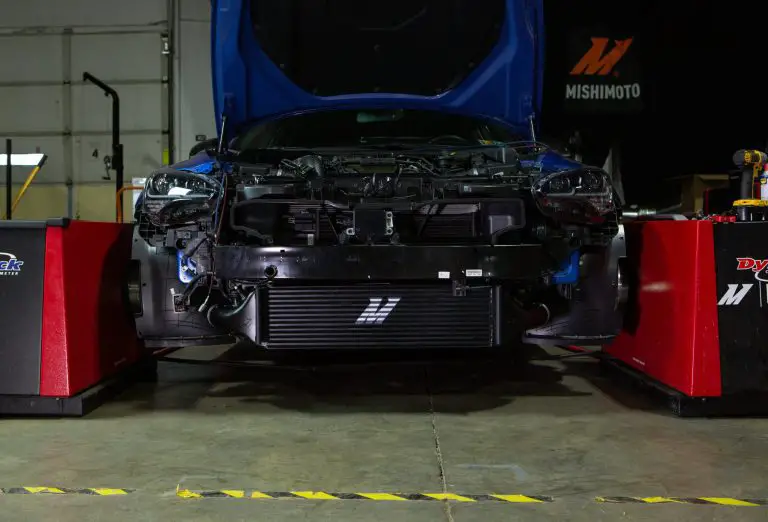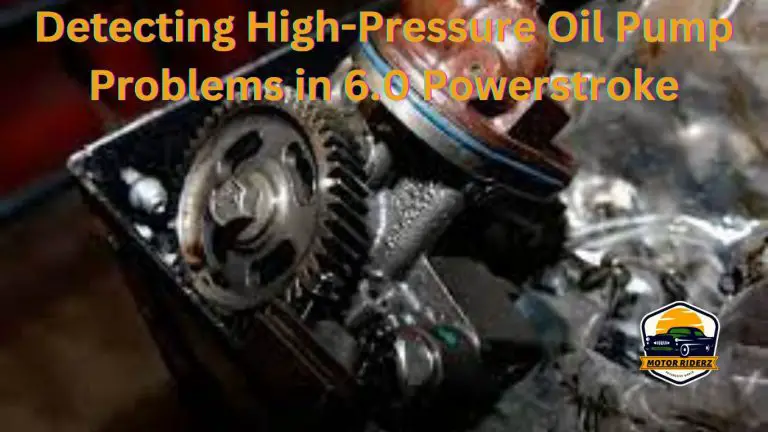Symptoms of a Faulty 7.3 Under Valve Cover Harness [2023]
Where we delve into the world of automotive diagnostics and troubleshooting. In this edition, we focus on the 7.3 Power Stroke engine and one of its critical components: the under valve cover harness. The under valve cover harness plays a crucial role in ensuring proper engine performance and functionality. However, like any other part, it can experience issues over time.
In this article, we will explore the symptoms that indicate a bad under valve cover harness in a 7.3 Power Stroke engine. By understanding these symptoms, you can identify potential problems early on and take appropriate action to rectify them. Whether you are a DIY enthusiast or simply curious about your vehicle’s inner workings, this article will provide you with valuable insights.
We will discuss common signs of a faulty under valve cover harness, such as engine misfires, stalling, loss of power, and check engine light illumination. We will also explore the causes behind these issues and outline the diagnostic process for identifying problems with the under valve cover harness. Additionally, we will provide guidance on replacement and repair procedures, as well as preventive maintenance tips to extend the life of the harness.
By familiarizing yourself with the symptoms and maintenance strategies related to the under valve cover harness in a 7.3 Power Stroke engine, you can proactively address any issues and ensure optimal engine performance. So, let’s dive into the world of the 7.3 Power Stroke under valve cover harness and equip ourselves with the knowledge to keep our engines running smoothly.
What is the Under Valve Cover Harness?
The under valve cover harness refers to a crucial electrical component found in the 7.3 Power Stroke engine, commonly used in Ford Super Duty trucks. It is a wiring harness that runs underneath the valve covers of the engine and connects various sensors and injectors to the engine control module (ECM).
The primary function of the under valve cover harness is to provide power and transmit signals between the ECM and the components it connects to. These components include the fuel injectors, glow plugs (in diesel engines), and oil pressure sensors. The harness ensures that the ECM can accurately control and monitor these components, enabling proper fuel delivery, combustion, and overall engine performance.
The under valve cover harness is designed to withstand the demanding operating conditions of the engine, including high temperatures, vibrations, and exposure to engine oils and fluids. However, over time, the harness can deteriorate due to wear and tear, leading to various electrical issues and engine performance problems.
The under valve cover harness is a critical electrical wiring harness in the 7.3 Power Stroke engine that connects the ECM to essential components, allowing for proper control and monitoring of the engine’s operation. Understanding its role is important for diagnosing and addressing potential problems related to the harness and ensuring optimal engine performance.
Common Symptoms of a Faulty Under Valve Cover Harness
A faulty under valve cover harness in a 7.3 Power Stroke engine can manifest in various symptoms that indicate electrical issues and potential problems with engine performance. Here are some common symptoms to look out for:
1. Engine Misfires
Misfires occur when the fuel is not properly ignited in one or more cylinders. A faulty under valve cover harness can disrupt the signals to the fuel injectors, leading to inconsistent fuel delivery and resulting in engine misfires. You may notice a rough running engine, uneven power output, and possibly hear popping or sputtering sounds.
2. Stalling or Hesitation
A malfunctioning under valve cover harness can cause intermittent stalling or hesitation during acceleration. This is due to irregular fuel delivery or timing issues caused by disrupted signals to the fuel injectors. The engine may hesitate or struggle to accelerate smoothly, impacting overall performance.
3. Loss of Power
A degraded under valve cover harness can lead to a loss of power in the engine. The inconsistent fuel delivery and disrupted signals to the fuel injectors can result in reduced engine performance and overall power output. You may notice a lack of responsiveness when pressing the accelerator pedal.
4. Check Engine Light Illumination
A faulty under valve cover harness can trigger the check engine light to illuminate on the dashboard. The engine control module (ECM) detects irregularities in the signals from the harness and generates error codes. Retrieving and analyzing these codes can provide valuable insights into the specific issue affecting the under valve cover harness.
5. Starting Issues
A deteriorating under valve cover harness may cause difficulties when starting the engine. You may experience extended cranking times or intermittent starting problems. This can be attributed to disrupted signals to the glow plugs (in diesel engines) or other starting system components.
6. Erratic Engine Behavior
An unreliable under valve cover harness can lead to erratic engine behavior. This can include inconsistent RPM readings, fluctuations in idle speed, or an unstable engine performance. The engine may rev up and down unexpectedly or exhibit irregular behavior when at idle.
Causes of Under Valve Cover Harness Issues
Under valve cover harness issues in a 7.3 Power Stroke engine can arise from various factors. Understanding the potential causes of these issues can help in diagnosing and addressing the problems effectively. Here are some common causes:
1. Wear and Tear
Over time, the under valve cover harness can deteriorate due to normal wear and tear. The constant exposure to high temperatures, engine vibrations, and the general aging process can lead to degradation of the harness’s insulation, connectors, and wiring. This wear and tear can result in electrical shorts, open circuits, or connectivity issues.
2. Heat and Engine Vibrations
The under valve cover harness is located in a demanding environment, subjected to intense heat from the engine and constant vibrations. The heat can cause the wiring insulation to become brittle or melt, leading to exposed wires and potential short circuits. Engine vibrations can also contribute to wire fatigue, causing connections to become loose or wires to break.
3. Oil Leaks and Contamination
Oil leaks from the valve covers or other engine components can pose a threat to the under valve cover harness. Oil can seep into the wiring harness, compromising its integrity and causing electrical issues. Contaminated harnesses can suffer from poor conductivity, corrosion, or damage to insulation.
4. Loose or Damaged Connections
The connections between the under valve cover harness and the various components it connects to, such as fuel injectors and sensors, need to be secure and properly seated. Loose or damaged connections can result in intermittent electrical signals or complete signal loss, affecting the performance of the engine.
5. Improper Installation
During repairs or maintenance, if the under valve cover harness is not installed correctly, it can lead to issues. Poor routing, pinched or chafed wires, or improper connections can cause electrical problems. It is crucial to follow proper installation procedures and ensure all connections are secure and in the correct positions.
6. Aftermarket Modifications
In some cases, aftermarket modifications or additions to the engine can impact the under valve cover harness. Improper installation of additional components, such as performance upgrades or accessories, can interfere with the harness and cause electrical interference or damage.
Diagnostic Process for Identifying Under Valve Cover Harness Problems
Diagnosing under valve cover harness problems in a 7.3 Power Stroke engine involves a systematic approach to identify the specific issues affecting the harness. Here is a step-by-step diagnostic process to help pinpoint the problems:
1. Visual Inspection
Begin by visually inspecting the under valve cover harness and its connections. Look for signs of wear, damage, or loose connections. Check for any exposed wires, broken connectors, or oil contamination. Pay close attention to the areas near the valve covers and where the harness passes through tight spaces.
2. Scan for Error Codes
Connect a diagnostic scanner to the vehicle’s OBD-II port and retrieve the error codes from the engine control module (ECM). Error codes related to the under valve cover harness or associated components can provide valuable information about the specific issues present.
3. Conduct Resistance and Continuity Tests
Use a multimeter to measure the resistance and continuity of the under valve cover harness. This helps identify any open circuits or high resistance that could indicate wiring or connector issues. Compare the measured values to the manufacturer’s specifications.
4. Perform Voltage Drop Tests
With the engine running, perform voltage drop tests on the under valve cover harness connections. This helps identify any excessive voltage drops across the harness, which could indicate poor connections or high resistance. Measure the voltage drop across each connection and compare it to recommended values.
5. Utilize Advanced Diagnostic Tools
In some cases, advanced diagnostic tools such as oscilloscopes can provide more detailed information about the signals and waveforms passing through the under valve cover harness. These tools can help identify any irregularities or abnormalities in the electrical signals.
6. Conduct Component Testing
Test the components connected to the under valve cover harness, such as fuel injectors or sensors, to ensure they are functioning correctly. This can involve performing individual component tests using manufacturer-recommended procedures or using specialized diagnostic equipment.
7. Verify Repairs
If any issues are identified during the diagnostic process, make the necessary repairs or replacements. This may involve repairing or replacing damaged wiring, connectors, or components. After the repairs, conduct further tests to verify that the under valve cover harness is functioning properly and that the related symptoms have been resolved.
Replacement and Repair of the Under Valve Cover Harness
Replacing or repairing the under valve cover harness in a 7.3 Power Stroke engine requires careful attention to detail and following proper procedures. Here are the steps involved in replacing or repairing the under valve cover harness:
1. Preparation
– Gather the necessary tools and replacement parts, including a new under valve cover harness, connectors, and any other required components.
– Ensure the engine is cool and in a safe working condition before starting any work.
2. Disconnect the Battery
– Disconnect the negative terminal of the vehicle’s battery to prevent any accidental electrical shorts or damage.
3. Remove the Valve Covers
– Depending on the specific vehicle model, remove the valve covers to access the under valve cover harness. Refer to the manufacturer’s instructions or a repair manual for the correct procedure.
4. Identify the Faulty Harness
– Inspect the under valve cover harness for any signs of wear, damage, or loose connections. Identify the specific area or component causing the issues.
5. Disconnect the Harness
– Carefully disconnect the connectors and wiring harness from the affected components, such as fuel injectors or sensors. Take note of the proper connections and routing for reassembly.
6. Remove the Old Harnss
– Remove any clips or fasteners securing the under valve cover harness in place. Gently remove the old harness, being mindful of any surrounding components or obstacles.
7. Install the New Harness
– Route the new under valve cover harness following the original path and proper routing guidelines. Ensure the connectors are securely plugged into the corresponding components.
8. Secure the Harness
– Use clips or fasteners to secure the new harness in place, ensuring it is properly positioned and away from any heat sources or moving parts.
9. Reinstall the Valve Covers
– Reinstall the valve covers according to the manufacturer’s instructions. Take care to properly seat the gaskets or seals and tighten the bolts to the recommended torque specifications.
10. Reconnect the Battery
– Reconnect the negative terminal of the vehicle’s battery.
11. Test and Verify
– Start the engine and verify that the under valve cover harness is functioning correctly. Check for any error codes, abnormal engine behavior, or symptoms that were present before the replacement. Conduct a thorough test drive to ensure proper operation.
Preventive Maintenance Tips to Extend the Life of the Under Valve Cover Harness
Taking proactive measures to maintain the under valve cover harness in a 7.3 Power Stroke engine can help extend its lifespan and prevent potential issues. Here are some preventive maintenance tips to consider:
1. Regular Inspection: Perform visual inspections of the under valve cover harness at regular intervals. Look for signs of wear, damage, loose connections, or oil contamination. Address any issues promptly to prevent further damage.
2. Proper Routing: Ensure the under valve cover harness is correctly routed and secured. Verify that it is away from any hot surfaces, moving parts, or sharp edges that could cause damage to the wiring or connectors.
3. Avoid Excessive Heat: Protect the under valve cover harness from excessive heat. Insulate the harness with heat-resistant materials or use protective wire looms to shield it from direct contact with high-temperature components.
4. Address Oil Leaks: Keep an eye out for any oil leaks in the valve covers or other engine components. Oil can seep into the under valve cover harness, leading to electrical issues. Repair oil leaks promptly to prevent oil contamination and damage to the harness.
5. Maintain Cleanliness: Keep the engine bay clean and free from debris, dirt, and excessive moisture. Accumulated dirt or moisture can promote corrosion or electrical shorts. Regularly clean the engine bay, taking care not to directly spray water onto electrical components.
6. Secure Connections: Ensure all connections in the under valve cover harness are securely fastened. Loose or corroded connections can lead to intermittent electrical signals or poor conductivity. Periodically check and tighten the connections as needed.
7. Avoid Aftermarket Modifications: If possible, avoid unnecessary aftermarket modifications or additions to the engine that may interfere with the under valve cover harness. Improperly installed accessories or performance upgrades can cause electrical interference or damage the wiring.
8. Use Quality Replacement Parts: When replacing the under valve cover harness or any associated components, use high-quality, OEM or equivalent parts. This ensures proper fit, functionality, and longevity of the harness.
9. Follow Maintenance Schedule: Adhere to the recommended maintenance schedule for the vehicle, as outlined in the owner’s manual. Regularly servicing the engine, including oil changes, filter replacements, and other maintenance tasks, can help maintain overall engine health, reducing the likelihood of issues with the under valve cover harness.



